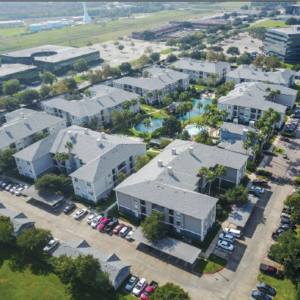One way to reduce upfront costs during diligence is to determine whether a preferred equity provider can re-use existing third-party reports. Every provider will have specific guidelines that apply on a case-by-case basis, but sponsors may want to determine whether existing reports, either their own or a senior lender’s, can be re-used as part of the preferred equity diligence. If the preferred equity provider determines that is acceptable, it can greatly reduce the upfront costs incurred by the sponsor.
Here is a look at the most common third-party reports involved in both construction and stabilized preferred equity transactions and some general timelines. It is always important to keep in mind that a preferred equity provider may have policies around ordering third-party reports that do not fit the information in this article, and sponsors must always discuss these requirements early in the diligence process in order to have adequate time if new reports will be required by the preferred equity provider.
Download the PDF version of this report here:
Construction Deals
Appraisal
If an existing report commissioned by the sponsor or by the senior lender is within 2 months of beginning diligence and the preferred equity provider determines that no material changes have been made to either the land or any plans, the provider may agree to obtain reliance on the old report rather than ordering a new one.
The market and comparables analyses should be fairly recent, so a desktop update of an older report may be a good way to keep costs down but still have confidence in the information, particularly if there has been no change to the land. If the sponsor already owns the land, this may give preferred equity providers greater confidence in that respect.
Phase I Environmental Reports
If a Phase I report is within 12-months of beginning diligence and no material changes have occurred at the site, the preferred equity provider may agree to re-use an existing report. As with appraisals, a preferred equity provider may be more likely to agree to this if the sponsor already owned the land at the time the report was completed.
One thing preferred equity providers likely will have in mind when determining their ability to rely on an existing report is that circumstances at properties surrounding the site may have changed in a way that creates an environmental issue that will need to be remediated. This is especially true the longer it has been since the existing report was completed. As with other types of third-party reports, sponsors should discuss all these circumstances with the preferred equity provider as early in the diligence process as possible.
If a Phase I report recommended a Phase II be completed for any reason, a preferred equity provider is unlikely to agree to rely on the existing reports.
Zoning
If a sponsor has received a zoning approval letter from the zoning authority within 3-months of the closing date, a preferred equity provider may agree to forego requiring a full zoning report. This may depend on several things, such as how often the zoning authority tends to re-zone and whether any construction has already begun at the site.
If an existing zoning report is within 6-months of the closing date, a provider may determine that it is willing to re-use that report. Much like the zoning letter, the preferred equity provider will look at how often zoning regulations tend to change and whether construction has begun already in making that determination.
If the land is in a municipality that does not regulate zoning, preferred equity providers likely will not require anything more than documentation of that.
Plan & Cost Review
If done as part of the construction loan diligence, the construction lender may allow the preferred equity provider to rely on an existing report rather than engage a new firm/report. This is always a good idea to determine with the construction lender as soon as possible because some lenders do not allow their reports to be shared and some vendors require a new engagement no matter what. In those cases, there will not be a way to save costs by re-using the report unless the preferred equity provider decides it does not need reliance on the report, which is unlikely.
If there is no bar to re-using an existing report by the construction lender or the vendor, sponsors should then determine whether their preferred equity provider is willing to rely on that existing report. In general, the plan and cost review is required by construction lenders, but in cases where sponsors are closing the preferred equity transaction separately from a construction loan closing, it is especially important to determine upfront the preferred equity provider’s requirements.
One thing that a provider will look at is that no changes to plans or budgets have occurred since the completion of the existing report. A preferred equity provider is unlikely to agree to use an existing plan and cost review if any changes have occurred in those areas.
Similarities to Stabilized Deals
Appraisal
For a property that is of recent vintage, if the preferred equity is financing a recapitalization without a refinance of the senior loan, the preferred equity provider may be willing to re-use an old report if the report is within 3-months of beginning diligence.
For a less recent vintage property, if the financing is a recapitalization without a refinance of the senior loan, the provider may agree to re-use the report if that report is within 2-months of beginning diligence.
As with construction deals, sales and rent comparables are especially important, so providers need to be confident that an existing report gives the most accurate information regarding those.
For acquisitions, especially if there is an upfront capital program, many preferred equity providers are willing to rely on a senior lender’s report if obtained for the closing, but any older report most likely would have been ordered by the seller and providers may be less willing to accept it without requiring a new report.
Phase I Environmental Reports
If the Phase I report is within 6-months of beginning diligence, preferred equity providers may allow the re-use of that report. As mentioned earlier when discussing construction financing, it is important to determine that no material changes have occurred either at the property itself or at any surrounding sites.
If the prior Phase I did not find any significant issues at the property or surrounding it, the provider may agree to rely on that existing report without requiring an update. Again, if the existing report recommended a Phase II report, preferred equity providers are unlikely to allow reliance on the old reports.
Property Condition Reports
If the sponsor owns the property and the report is within 2-months of the closing date, a preferred equity provider may only require reliance without an update to the contents, especially if the existing report was ordered by the senior lender either as part of the acquisition or a refinance.
This is less likely as preferred equity providers need to ascertain the current state of the property and understand any deferred maintenance that may exist, as it may need to have a capex budget to address it.
Brand new properties are more likely to meet this standard than properties that are older, but sponsors should determine the provider’s requirements early in the diligence process.
Zoning
A preferred equity provider may allow the old report to be used if the existing report is within 6 months of beginning diligence; some providers may require a letter from the zoning authority that nothing has changed from the prior report.
If the property is in a municipality that does not regulate zoning, there generally is no need for a full zoning report and the preferred equity provider may be satisfied with confirmation from the municipality that this is the case.
What It All Means
Both sponsors and preferred equity providers are motivated to keep down costs associated with closing a transaction. A good area to examine for cost savings is third-party reports. Under some circumstances, preferred equity providers may be willing to re-use existing reports, so sponsors should find out early in the diligence process whether they will be able to do so.




